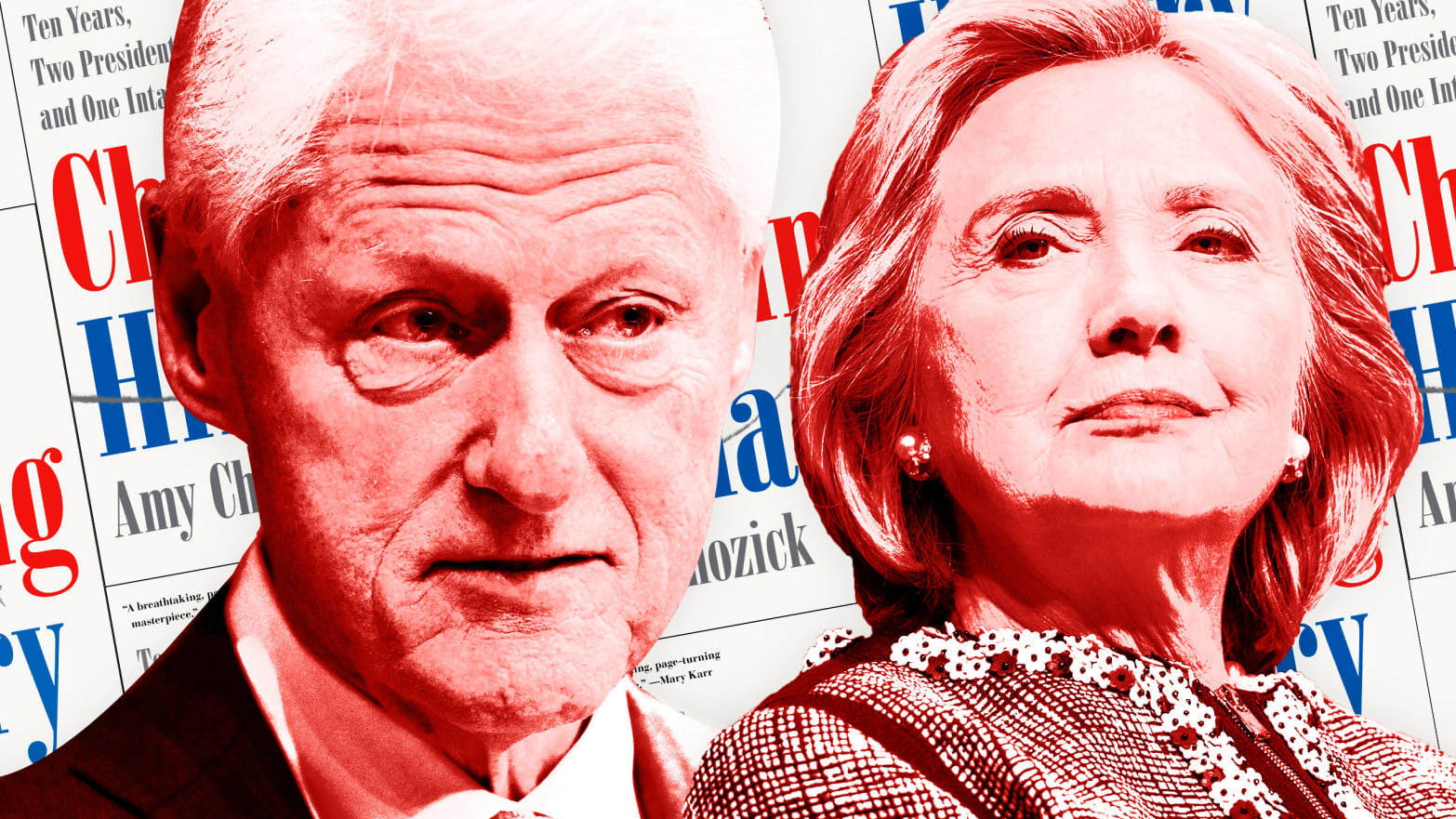“No one in modern politics, male or female, has had to withstand more indignities, setbacks and cynicism. She developed protective armor that made the real Hillary Clinton an enigma. But if she was guarded about her feelings and opinions, she believed it was in careful pursuit of a dream for generations of Americans: the election of the country’s first woman president.”
That would have been the nut graf of The New York Times story about Hillary Clinton’s historic victory that would have run under the headline “Madam President” spread across six front-page columns, according to reporter Amy Chozick’s new book, Chasing Hillary: Ten Years, Two Presidential Campaigns, and One Intact Glass Ceiling.
Chozick writes that the Clinton campaign, which she covered from the beginning, had reacted furiously to the prospect of a Joe Biden run, as floated first in an August 2015 Maureen Dowd Times column and then in a reported story by Chozick. In the book, she writes that “Biden had confided (off the record) to the White House press corps that he wanted to run, but he added something like ‘You guys don’t understand these people. The Clintons will try to destroy me.’”
Throughout the book, Chozick refers to her fellow journalists in the small pool that flew on the campaign plane as “Travelers,” while referring to many Clinton staffers collectively as “The Guys.”
Asked to comment on the book, a former campaign staffer who’s referred to in it as one of “The Guys” told The Daily Beast: “The challenge on the campaign was that you had a reporter holding the Clintons to a higher standard through a lower standard of reporting. Amy was not always an honest broker, and this book seems to be more of the same. It ridicules people with a smile, contributing little to the public discourse.”
From early on, the Clinton camp saw Trump as an enemy to encourage, Chozick writes. During the campaign, as had been previously reported, there was an effort to elevate Trump into a so-called Pied Piper in order to tie him to the mainstream of the Republican Party.
“An agenda for an upcoming campaign meeting sent by [Campaign Manager] Robby Mook’s office asked, ‘How do we maximize Trump?’” Chozick writes, describing a time when the GOP primary was still crowded.
Even as Trump surged in the polls, the Clinton camp still saw him as a danger to stronger candidates rather than such a candidate in his own right, Chozick reports, so that in August 2015, “when the main GOP debate came on, everyone pushed their pizza crust aside and stared transfixed at the TV set… [Campaign Manager] Robby [Mook] salivated when the debate came back on and Trump started to speak. ‘Shhhhh,’ Robby said, practically pressing his nose up to the TV. ‘I’ve gahtz to get me some Trump.’ Robby thought Rubio would be the nominee. Podesta was bullish on Kasich. Bill and Hillary, still stuck in the 1990s, feared the Bush surname most of all.”
By the time of the conventions, though, as Trump was selected as the Republican nominee, the Clinton campaign was still trying to figure out how to improve her negative favorability ratings.
“A week earlier, she’d cut off Joel and the pollster John Anzalone, as they walked her through the almost daily reminder that half the country disliked her,” Chozick writes. “You know, I am getting pretty tired of hearing about how nobody likes me,” she said.
“‘Oh, what’s the point? They’re never going to like me,’ Hillary told this friend.”
That sense of resignation about the candidate’s limitations infected her campaign, writes Chozick.
“After the convention, donors asked Brooklyn what they planned to do to pull Hillary’s trust numbers out of the toilet. The answer was always the same: nothing. Podesta would explain ‘I remember no one trusted Bill Clinton and he won twice.’”
All that seems to lead into the damaging video of Clinton calling half of Trump supporters a “basket of deplorables,” at a New York fundraiser in September 2016.
That was no slip of the tongue, since “Hillary always broke down Trump supporters into three baskets,” Chozick writes.
- “Basket #1: The Republicans who hated her and would vote Republican no matter who the nominee.
- Basket #2: Voters whose jobs and livelihoods had disappeared, or as Hillary said, ‘who feel that the government has let them down, the economy has let them down, nobody cares about them, nobody worries about what happens in their lives and their futures.’
- Basket #3: The Deplorables. This basket includes ‘the racist, sexist, homophobic, xenophobic, Islamophobic—you name it.’
“The Deplorables always got a laugh, over living-room chats in the Hamptons, at dinner parties under the stars on Martha’s Vineyard, over passed hors d’oeuvres in Beverly Hills, and during sunset cocktails in Silicon Valley,” Chozick continues.
“‘I really messed up,’ [Clinton] told aides that night,” Chozick writes of the evening when the candidate’s Deplorables shtick went public.
On the night of the election, Chozick describes a dejected Clinton when she was told by campaign staffers that it was over.
“Of all the Brooklyn aides, Jen Palmieri had the most pleasant bedside manner,” Chozick writes. “That made her the designated deliverer of bad news to Hillary. But not this time. She told Robby there was no way she was going to tell Hillary she couldn’t win. That’s when Robby, drained and deflated, watching the results with his team in a room down the hall from Hillary’s suite, labored into the hallway of the Peninsula to break the news. Hillary didn’t seem all that surprised. ‘I knew it. I knew this would happen to me….’ Hillary said, now within a couple of inches of his face. ‘They were never going to let me be president.’”
When all was said and done, according to Chozick’s book, the somewhat acrimonious relationship between the Clinton campaign and The New York Times continued, even after the campaign ended:
“After the election, Bill would spread a more absurd Times conspiracy: The publisher had struck a deal with Trump that we’d destroy Hillary on her emails to help him get elected, if he kept driving traffic and boosting the company’s stock price.”

